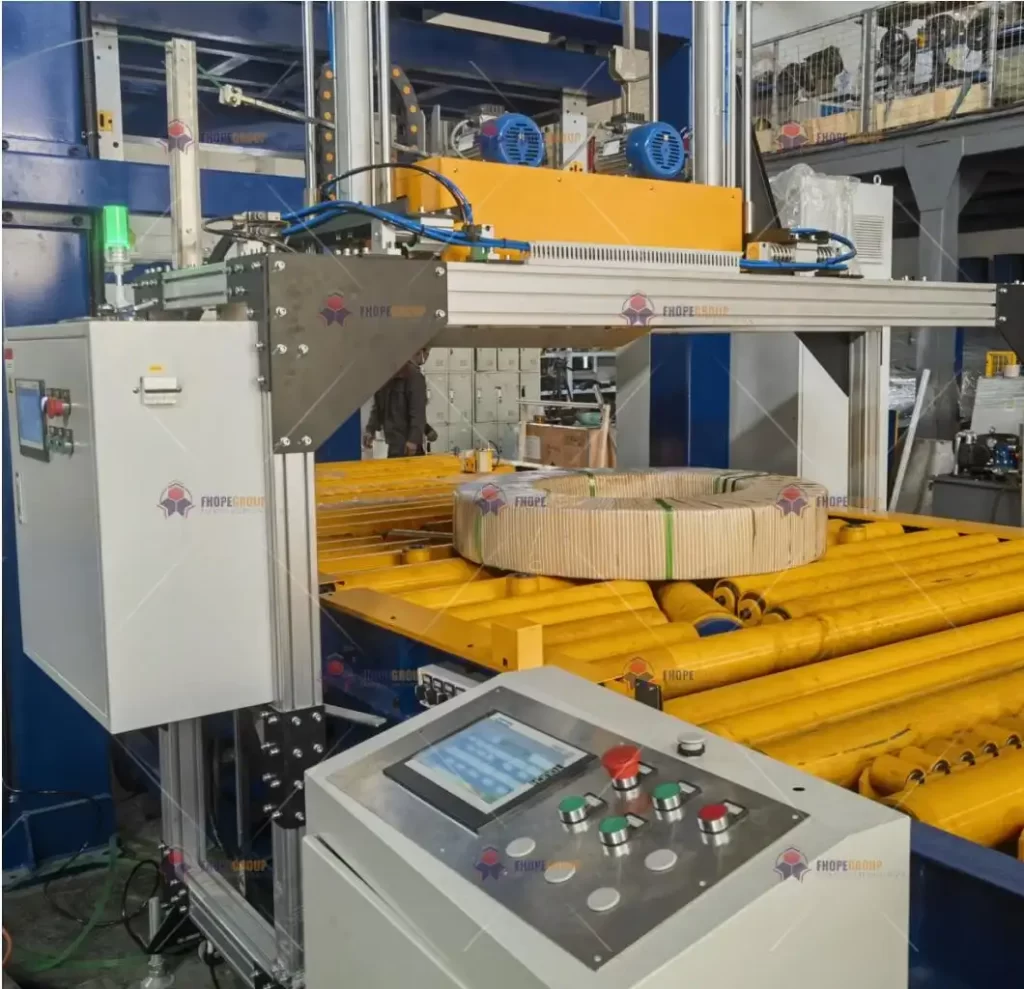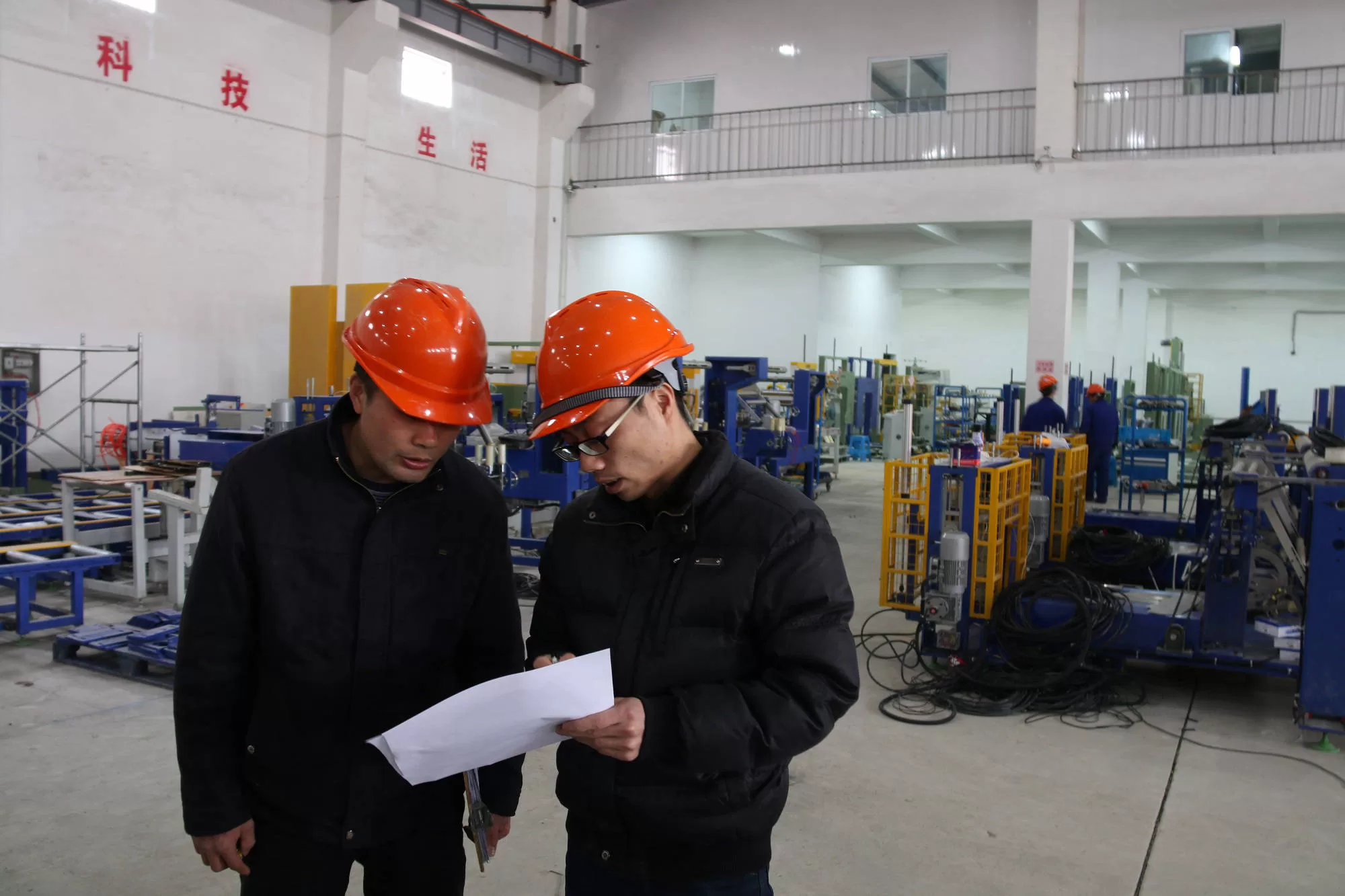Green Manufacturing and Automated Packaging: How Steel Companies Fulfill Sustainability Goals
- Green Manufacturing and Automated Packaging: How Steel Companies Fulfill Sustainability Goals

In today’s world, sustainability is no longer a mere buzzword but a business imperative. Steel companies, which have long been associated with heavy industrial operations and high carbon footprints, are now under pressure to adopt more environmentally-friendly practices. One area where substantial progress is being made is in the integration of green manufacturing with automated packaging solutions. This article explores how steel companies are adapting to these new challenges and the role of automation in helping them meet their sustainability goals.
The Intersection of Green Manufacturing and Steel Production
The steel industry is among the largest industrial sources of greenhouse gas emissions, contributing significantly to global carbon footprints. However, it’s also a sector where substantial improvements can be made through green manufacturing practices. These practices aim to reduce waste, conserve resources, and improve energy efficiency across all stages of production.
What Is Green Manufacturing?
Green manufacturing refers to the use of technologies and processes that minimize environmental impact. In the context of steel production, this involves:
- Reducing emissions through cleaner energy sources like hydrogen or renewables.
- Conserving water by implementing closed-loop water systems.
- Minimizing waste by recycling and reusing materials wherever possible.
- Improving energy efficiency through innovations in production and machinery.
By implementing these strategies, steel companies can significantly reduce their carbon footprints, helping them align with international environmental standards like the Paris Agreement.
The Role of Automated Packaging in Green Manufacturing
Automated packaging systems are playing a pivotal role in helping steel companies meet their sustainability goals. These systems are not only efficient but also contribute to environmental protection by reducing the use of packaging materials, minimizing waste, and enhancing energy efficiency in the packaging process.
Automated packaging machines, particularly those designed for steel coils, reduce human error, ensure consistency, and drastically cut down on material usage. This not only decreases the cost of packaging but also lowers the overall environmental impact. Through precise measurements and automated processes, the use of excess materials is minimized, leading to less waste. This is crucial for steel manufacturers aiming to adopt a circular economy model.
How Steel Companies Are Embracing Sustainability
Many steel companies have started transitioning towards sustainable practices, focusing on both their production processes and packaging. Here’s how they are achieving these goals:
1. Integrating Renewable Energy into Operations
A growing number of steel manufacturers are investing in renewable energy sources like wind and solar to power their plants. This transition reduces dependency on fossil fuels, leading to lower carbon emissions. For instance, using solar energy for running automated packaging lines drastically lowers operational costs and helps in achieving green certification.
2. Reducing Material Waste in Packaging
In traditional packaging processes, especially manual ones, the risk of overuse of materials such as plastic and steel strapping is high. Automated systems, however, ensure that only the exact amount of material is used, which minimizes waste. This shift to precision-based automation not only cuts costs but also significantly reduces the environmental footprint of packaging materials.
3. Recycling and Reusing Packaging Materials
Sustainable steel companies are increasingly using recyclable materials for packaging, such as biodegradable wraps and reusable containers. Automated packaging systems are designed to work seamlessly with these sustainable materials, allowing companies to package their products in an environmentally-friendly manner without compromising on efficiency.
For instance, using automated stretch wrap machines designed for steel coils allows the company to use thinner, more eco-friendly materials while still maintaining the strength and integrity of the package. This way, companies reduce their dependency on non-renewable materials like plastic and metal strapping.
Benefits of Automated Packaging for Green Manufacturing
Automated packaging is more than just a tool for efficiency. When integrated into green manufacturing practices, it provides a host of benefits that support both operational efficiency and sustainability.
1. Lower Energy Consumption
One of the key advantages of automated packaging systems is their ability to run on low energy settings. Unlike traditional manual packaging methods, which can be labor-intensive and energy-consuming, automated systems use optimized energy levels. Many modern machines can operate in energy-saving modes, further reducing the power needed to run operations.
2. Precision in Material Usage
Automated packaging lines are designed with precision technology that allows steel companies to use only the required amount of packaging material. By eliminating excess usage, these systems help in conserving resources and reducing waste. This precision also translates to better product protection, reducing the chances of damaged goods and the need for repackaging.
3. Reduced Carbon Footprint
With reduced material usage and lower energy consumption, automated packaging directly contributes to lowering a steel company’s carbon footprint. Additionally, many systems now incorporate features such as smart energy management, which automatically adjusts the machine’s energy use based on the workload, further improving efficiency and reducing emissions.
4. Increased Operational Efficiency
Incorporating automated packaging systems into a green manufacturing model doesn’t just benefit the environment—it also boosts operational efficiency. Automated systems work faster, require fewer employees, and run with minimal downtime, making them ideal for high-demand steel production environments. Efficiency gains translate to cost savings, which in turn can be reinvested into more green initiatives.
Case Study: A Green Revolution in Steel Packaging
One notable example of green manufacturing in the steel industry is ArcelorMittal, a leading steel manufacturer that has fully integrated automated packaging into its sustainability efforts. The company implemented automated coil wrapping and strapping systems designed to use minimal materials while ensuring product protection during transport.
Through their automated packaging system, ArcelorMittal reduced their packaging material usage by 20%, resulting in a significant reduction in waste. The energy-efficient machines they used also helped lower overall energy consumption in the packaging process by 15%. These changes allowed them to save both on costs and environmental impact, all while maintaining product quality.
Future Trends in Green Manufacturing and Automated Packaging
As the steel industry continues to evolve, we are likely to see further advancements in both green manufacturing and automated packaging technologies. The industry is gradually moving toward carbon-neutral goals, and with the right technology, it is well on its way to achieving that.
1. AI and Smart Automation
Artificial intelligence (AI) is poised to revolutionize how steel companies manage their operations. With AI-powered automation, companies can optimize their packaging processes by predicting the best methods for minimizing waste and energy usage. Smart packaging machines that adjust to changing conditions in real-time will likely become the norm in the near future.
2. Integration of IoT in Packaging Systems
The Internet of Things (IoT) is playing a growing role in enhancing the efficiency of packaging systems. IoT-connected machines can track energy usage, packaging material consumption, and machine performance in real-time, allowing for data-driven adjustments to further minimize waste and energy consumption.
3. New Sustainable Materials
As green manufacturing grows, we can expect a rise in the use of eco-friendly materials for packaging. Future developments could include biodegradable wraps, recyclable steel strapping, and other sustainable materials that reduce the environmental impact of packaging even further.
Conclusion
In an era where sustainability is a global priority, steel companies are facing mounting pressure to reduce their environmental impact. Green manufacturing and automated packaging provide effective solutions, enabling companies to lower emissions, reduce waste, and improve overall operational efficiency. By integrating automated packaging into their green strategies, steel manufacturers can not only meet their sustainability goals but also position themselves as leaders in the transition toward a greener future.
The path to greener steel production is clear: embracing automated packaging solutions is not just a trend but a necessity for companies looking to stay competitive in an increasingly eco-conscious market.

Get Your Best Solution !









